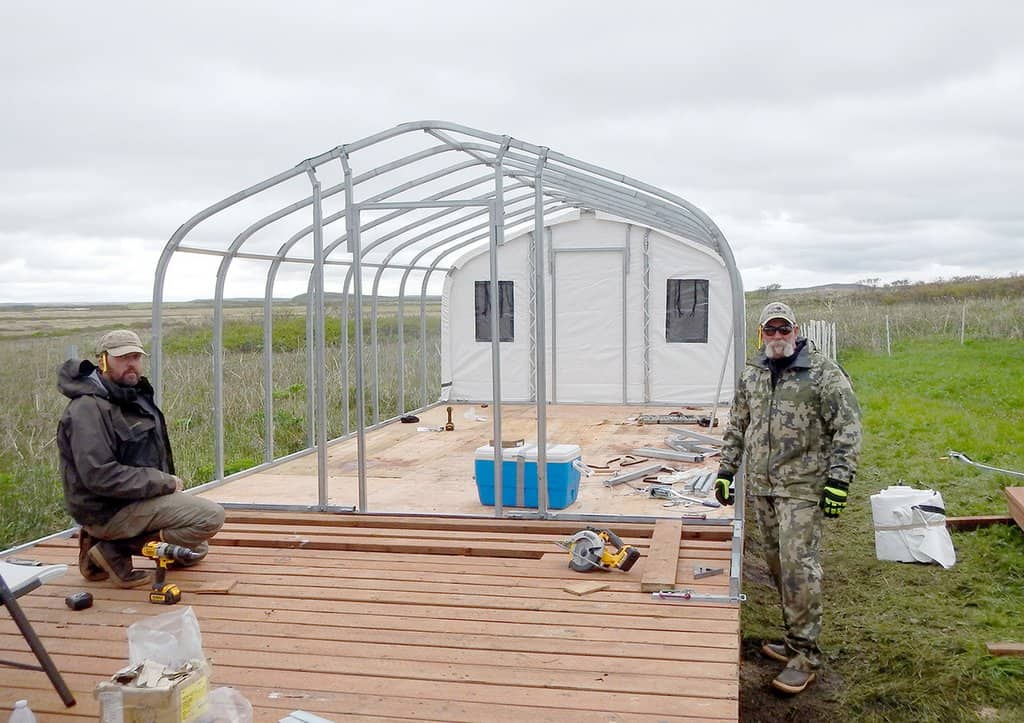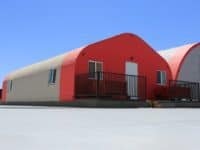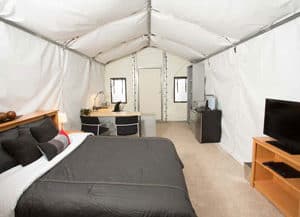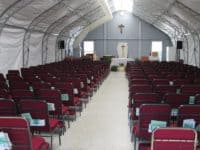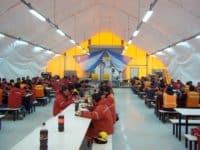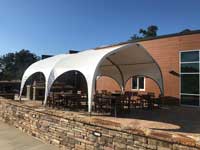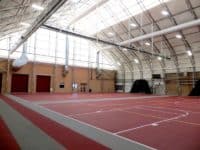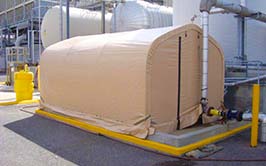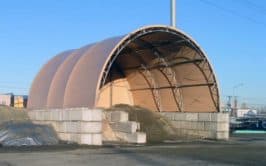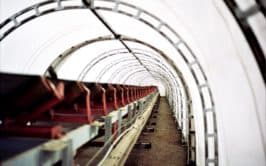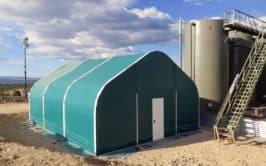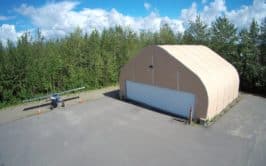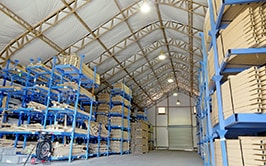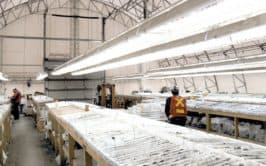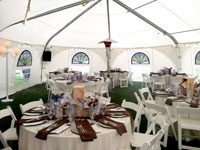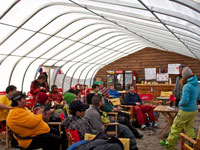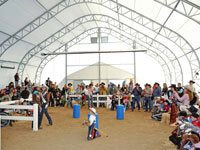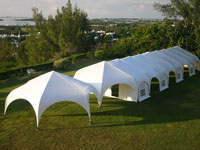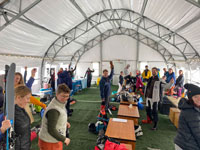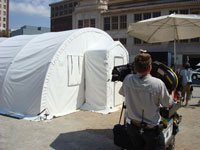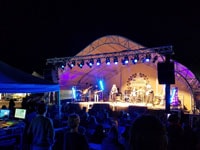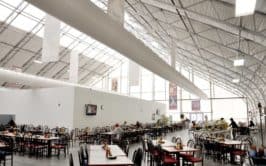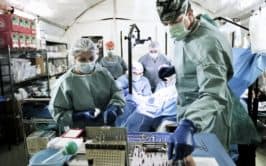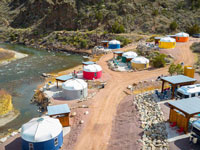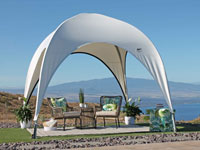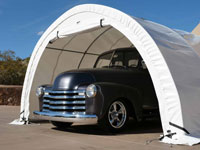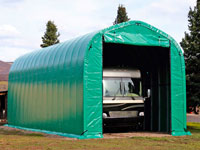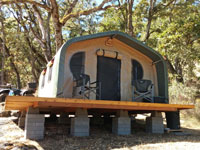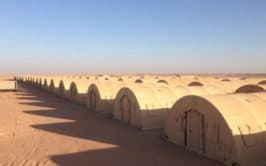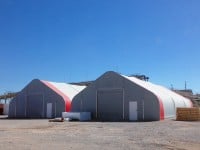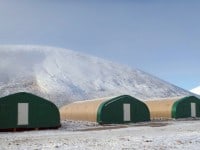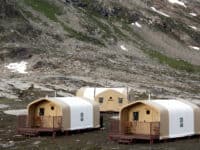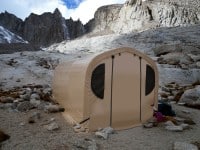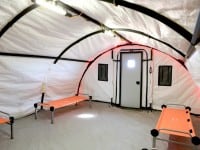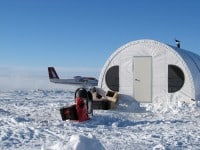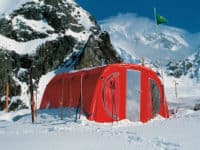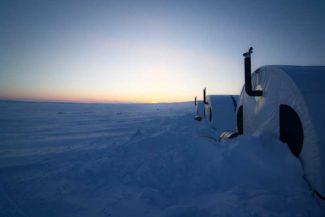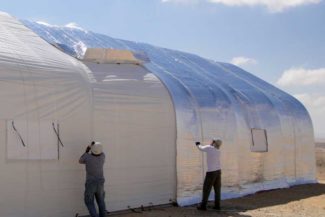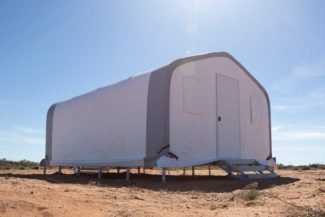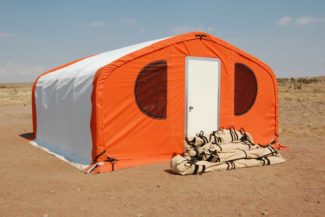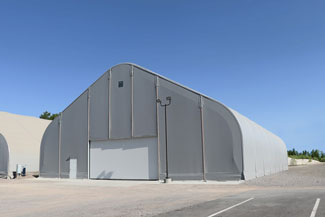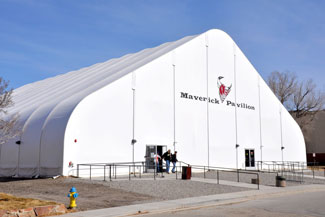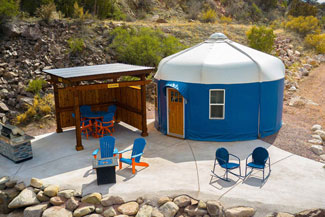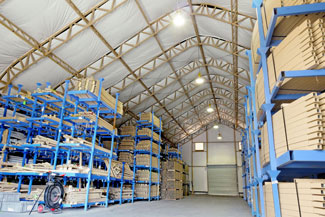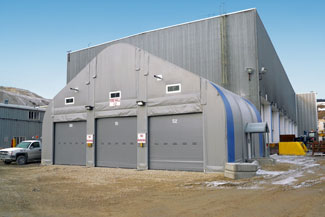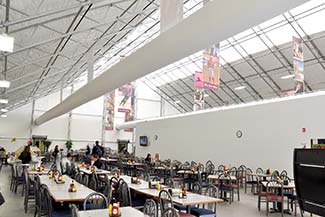The Alaska Peninsula can be a rough place. It’s remote and battered by high winds and heavy snows, so surviving the trials of one of Alaska’s last frontiers requires strength and the clout to ride out storms. That’s why Alaska Structures makes the fabric buildings of choice for the Aleutian Pribilof Island Community Development Association (APICDA).
“They’ve been withstanding 90-mph winds and snow loads in the wintertime. Freeze-thaw has really not affected them,” said George Weaver, APICDA’s general manager of tourism. “We leave our shelters up all winter. I know that other people take them down and put them back up, but we have been leaving them up and they have been working well for us.”
In fact, some of APICDA’s eight Alaska Structures fabric shelters have been standing year-round since 2009. The community added its newest fabric building, a TSX Series portable cabin, last year.
“They’re not labor-intense at all to put together and they make a really nice camp,” Weaver said. “And again, they’re 750 miles out on the peninsula in the remotest country in Alaska.”
APICDA built fabric buildings from Alaska Structures in about one week, counting days spent on groundwork. The fabric buildings have hard doors as well as soft and hard window packages. Work crews also added their own flooring systems and walkways to the shelters, one of which has a porch.
Weaver said APICDA hooks up its fabric buildings to generators for power. Oil-burning stoves, safe to use indoors because of the shelters’ fire-resistant fabric sheets, provide heat. The tensile structures’ proprietary insulation packages also help keep the shelters warm and stop water buildup inside walls and ceilings.
In all, Weaver said the fabric buildings offer an open and comfortable dwelling for guests through the summer and fall fishing seasons.
“We have some fairly high-end clients and they really like the operation and using the [shelters],” Weaver said.
At first, APICDA chose tensioned sheet structures from a peer based in Alaska. However, the buildings didn’t last long.
“They were too thin. They would get some wind damage, and if they got a rip in them it would just continue to grow,” Weaver said. “None of [the Alaska Structures] products have had any damage.”
Additionally, Weaver said the perks of choosing tensioned fabric buildings from Alaska Structures go past strength in a harsh climate.
“I think one of the best features of that product is that it’s a very durable product, but, at the same time, they can be transported by boat, by plane, to these remote sites and be put up in a very short time,” he said.
Furthermore, Weaver said APICDA plans to add more Alaska Structures buildings in the future. He would suggest the products to others because he believes they have great value and incredible return on investment.
“Oh yeah. If we’d done a hard-sided lodge structure out there it would have cost us, I’m just guessing, half a million to $1 million,” he said. “This investment is probably under $100,000 for our total investment out there.”
About APICDA
APICDA is a nonprofit, community-focused fishery in Alaska. According to the group’s website, APICDA “converts fishery resources into positive community development by using profits to build infrastructure in the communities, fund education and training of the members, providing community grants and other financial investments.”
For more info, contact APICDA online, email info@apicda.com or call +1-907-588-0161.
For more info on how Alaska Structures can house maintenance and assembly workshops with structures proven in the world’s harshest climates, call +1-907-344-1565, email us or contact us online.
